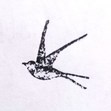Weights and Measures
I am an inconsistent creature when it comes to writing measurements. Or at least I’m varied. I very much blame being British; being raised with two different systems sort of working in parallel but sort of not just means that I have both running all the time and there is no consistent logic as to which I’ll apply in any given situation.
For whatever reason the relative imprecision of inches and feet and miles feel slightly more ‘fantastical’ to me – the metric system is objectively superior but in a fantasy realm it feels like nobody would have quite gotten to that level of precision and standardisation yet. But I’m certainly not going to write an Imperial currency system in anywhere, because as much as I love the old money it is a baffling mess. Similarly, though I’ll write ‘yards’, it’s only because I’m conceiving the distance in metres and it’s close enough for an estimate.
But that’s in fantasy. When I’m writing SF ‘kilometres’ – and especially ‘klicks’ – feel futuristic and clever. (I blame much Artemis Fowl and Chris Ryan as a kid.) Most of my SF is very ‘soft’, though, so it’s not like I stick to this: someone will issue orders in kilometres and metres, but when in the middle of a firefight rounds will absolutely whizz past ‘inches away’. And I’m certainly not going to be measuring anyone’s height in centimetres any time soon, thank you very much. (Again, metric is objectively better but I’m a creature of habit.)
When I do write a ‘harder’ SF story, though, precision is important. I force myself to take great pains to measure everything metrically – kilometres, centimetres, all that. That’s the way that actual scientists and space people in the real world do things, after all, and so I must follow suit. If we carry the Imperial system into the far future then we’re doomed as a species, let’s be honest.
All this is building up to the slightly nerve-wracking but very righteous events of yesterday evening, when I had to correct a US copy-editor who had Americanised my story and switched ‘tonnes’ for ‘tons’.
Now, the style guide for this magazine is all US English and that’s absolutely fine; it’s the way they do things, and there are far more important arguments to have with our cousins across the pond than how to spell things right. But when you get to measurements then find-and-replace won’t cut it. 200 Imperial tons is only 180 metric tonnes, and so (without spoilers) a key object in the story was suddenly able to tighten its belt by 20 tonnes worth of notches. And that’s the sort of thing that could be quite important further down the line. I took the time to change all my speeds to KPH, all my distances in kilometres, etc – and my weights to the correct and more precise tonnage.
(And this is a very easy mistake to make – it took me long enough to figure out which tonne I should even be using, let alone what the difference was. I didn’t even know there was a difference until this story!)
EDIT: So there’s an Imperial ton and a different US ton apparently! It still works out at a difference of 3 tonnes, so I still feel justified, but slightly less so. Why is this so confusing.
It was a slightly nerve-wracking email to send, but this is actually a matter of precision over principles. Sometimes measurements don’t really matter, but sometimes they do, and two letters can turn into 20 tonnes with worrying ease. I reckon in future I’ll be paying much more attention to my distances. Maybe I should draw some diagrams. I know a guy with a very nice gridded battle-map…



